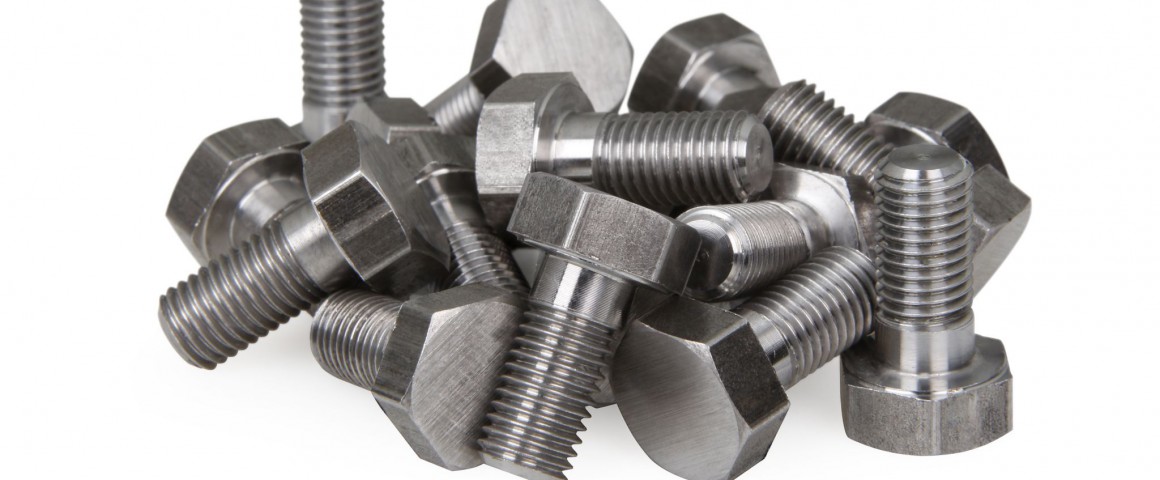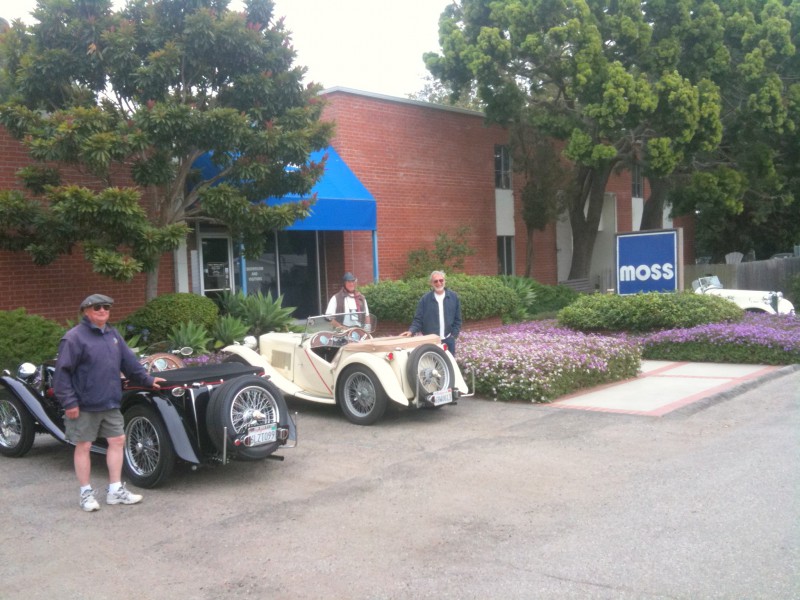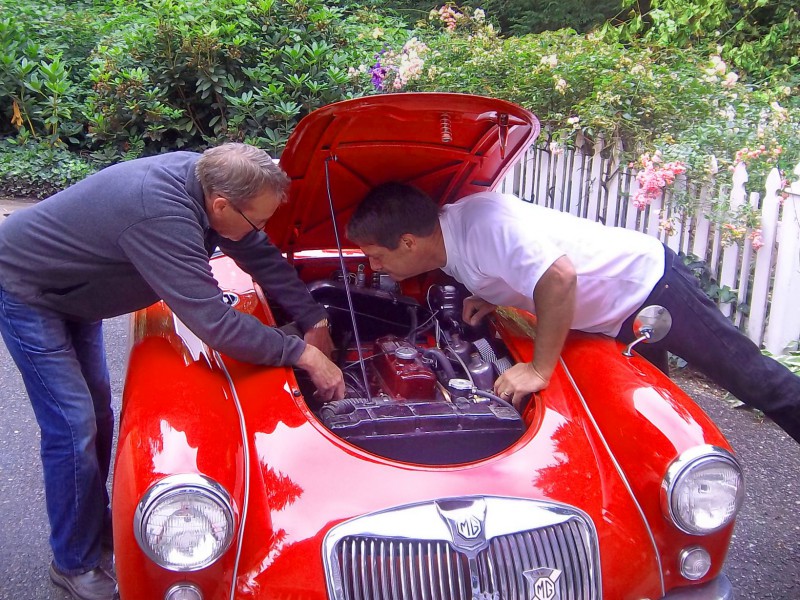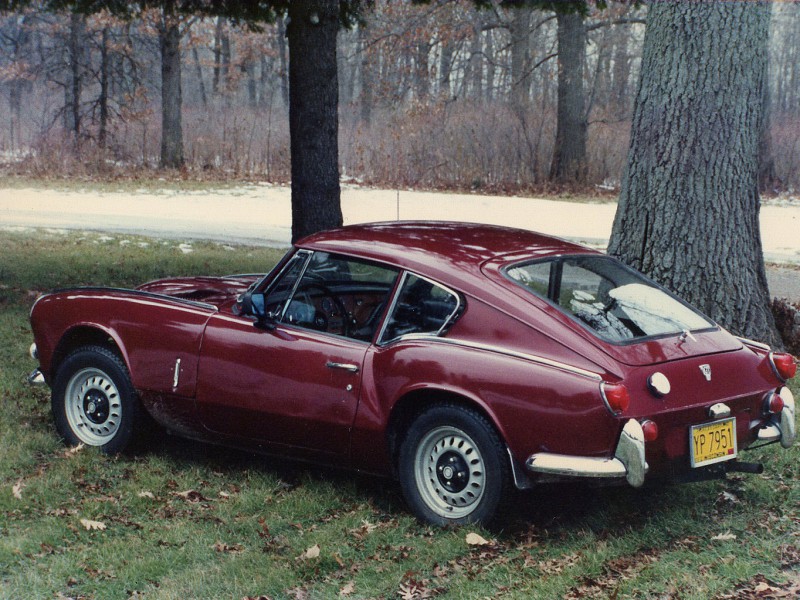A good many of the cars we deal with don’t use nuts and bolts that can be purchased from the corner hardware store. Much maligned and misunderstood, Whitworth hardware used on older British cars has quite an interesting history.
Threaded fasteners go back a long way. In 1568, the first practical screw cutting machine was invented by a French mathematician named Jacques Besson. After that, things took off…after a fashion. By 1611 the idea had caught on in England well enough for it to be mentioned in a book, the significant point being that the companion piece to any screw—the nut—was mentioned as well. While the concept was basically sound, in practice there were a few bugs to be worked out. In the 1600s putting something together was a real chore. Once you found a bolt you liked, you had to find a nut, and that was a matter of chance since nobody was making consistent threads. Once you found a nut that fit (well, sort of) the nut and bolt were tied together with string.
This happy chaos continued until well into the industrial revolution, when Henry Maudslay perfected a lathe that could cut a consistent thread pitch into the shaft of a screw. This made it possible to make large numbers of identical screws. Making threaded fasteners on a lathe is time consuming, and therefore expensive. In 1850 a man from New York named William Ward perfected a system for forming the threads on a bolt by heating it to 1600 degrees Fahrenheit, and then rolling it between two grooved dies. The grooves on the flat dies were forced into the bolt, and the threads were formed as the bolt rolled between the fixed and the moving die. This same basic system is used today, the only difference being that the bolts are not heated before being rolled. “Cold” forming produces much more uniform threads, allowing closer tolerances, and because the bolts are not heated, they are stronger.
The man responsible for the development of the first standards for the production of threaded fasteners is none other than Joseph Whitworth. In 1841, his paper “A Uniform System of Screw Threads” set forth a concept that was to revolutionize manufacturing:
1) Each diameter of bolt or screw will have its own number of threads per inch (TPI), or pitch.
2) The angle between the side of one thread and the adjacent thread should be 55 degrees.
3) Both the crest and root of each thread should be rounded with equal radius (r).
4) The relationship of the pitch to the radius of the rounded portion of the thread is defined by a ratio of 1/6th; in other words, the radius r = (l/6) x (pitch).
Finally there was a system that would allow the fasteners used on one type of machine to be replaced with another “standard” fastener. The logic was hard to beat, and England adopted the system to the extent that by 1881 it was the effectively the “British Standard.”
The Whitworth System was used as proposed for bolts and screws from 1/8″ to 4 l/4″ in shank diameter up to 1908, when an additional thread form was proposed—British Standard Fine (BSF). Presented by the British Engineering Standards Association, BSF was identical to the original Whitworth form except that the pitch was finer—meaning more threads per inch. Now, a bolt with a diameter ¼ inch could have either 20 threads per inch (BSW) or 26 threads per inch (BSF). The advantage of the finer thread pitch is twofold. A fine thread bolt is about 10% stronger than a coarse thread bolt of the same size and material. Fine threaded fasteners also have greater resistance to vibration. Those of you who have worked on cars with Whitworth hardware will have noticed that almost all the hardware is BSF for these reasons. Why use any coarse threaded bolts at all? Coarse thread fasteners are well suited for use in tapped holes in material softer than the bolt (such as studs in aluminum cylinder heads), and they are easier to assemble. It’s almost impossible to cross thread a coarse threaded fastener by hand.
For sizes smaller than 1/8″, the British adopted a Swiss Standard thread form for small screws and renamed it British Association (BA) thread. This thread form was adopted in 1903. Like the Whitworth form, it has rounded crests and roots, but the angle between adjacent faces of the screw’s threads is 47 ½ degrees. Instead of being sized by fractions of an inch, they are numbered 0BA, 1BA, 2BA and so on up to 22BA. In the BA system the larger the number, the smaller the screw. Other than that the system is analogous to our machine screw system, where numbers are used (#6, #8, #10 and so on).
A question often asked is why didn’t the US adopt the Whitworth System? As it turns out, we did. By 1860, most of Europe and the US were using the system. In 1864, however, William Sellers was instrumental in persuading the Franklin Institute in Philadelphia to set up a committee whose prime goal would be to set up national (meaning American) standards. Sellers, who made machine tools, was dissatisfied with the Whitworth System on several points; the 55-degree angle was hard to gauge and the rounded threads caused an uncertain fit between the nut and bolt. He also argued that the Whitworth threads were weaker than a system he proposed where the angle between the opposing faces was 60 degrees (not Whitworth’s 55), and the crests and roots were flattened. The Franklin Institute adopted Seller’s system, and by 1900 it was in use throughout the US and much of Europe. The American system had both fine and coarse threads called, logically enough, American National Fine (ANF) and American National Coarse (ANC).
The Whitworth system is further complicated by its tool size designations. American tools (and European) are sized by the head of the bolt or the size of the nut. An American 1/2″ wrench fits a nut or bolt with a head 0.500″ across the flats. A Whitworth wrench is sized according to the diameter of the shank of the bolt, not the head. A ¼ W (Whitworth) wrench fits a bolt with a shank ¼” in diameter. The jaws of this ¼ W wrench will fit a bolt head or nut 0.525″, which is a bit larger than a 1/2″ American wrench. As if that wasn’t enough, in 1924 the British decided that the heads of the Whitworth bolts were too large, so they were downsized without changing the diameter of the shank.
The “new specification” bolts had heads that were one standard size smaller so that the old tools could still be used—otherwise the literally millions of tools in use would be rendered obsolete. The jaws of a ¼ W wrench are 0.525″ wide, and will fit pre-1924 bolts with a ¼” diameter shank. The same wrench will also fit the head of a post-1924 BS standard bolt with a 5/16″ diameter shank. To enable the tools to be selected easily, they are marked with both sizes. The ¼” W wrench described above will be stamped “¼ W”and “5/16 BS”, the BS in this case standing for “bolt size.”
The Whitworth, BS and BA wrenches are unique—there are no American counterparts. Use of the closest American wrench will often result in the rounding off of the corners of British nuts or bolts, with intense frustration leading to the use of pliers or the ever-popular Vice Grips.
The Whitworth System, with its associated BS thread system, was in use by British automobile manufactures until 1948, when Canada, the US, and the United Kingdom adopted a Unified Thread System which incorporated features of Seller’s and Whitworth’s systems. Actually, the push to standardize an international thread system was initiated during the First World War. Both America and England shared much of the same machinery and equipment, making interchangeable parts essential. The issue was the subject of various international conferences from 1918 to 1948, with the Second World War playing the role of catalyst for the adoption of the Unified System. The Unified System was adopted by the British automobile industry on a large scale in 1956, when most of the common fasteners on the cars built that year were of the Unified Thread System. The fact that the major market for these cars was in the US was no doubt a major factor in the decision. The Unified System is basically the same as the American system in use—the two thread systems were American National Coarse (ANC) and American National Fine (ANF). They became the Unified coarse and fine. The change was not mandatory and some British manufacturers (notably SU and Lucas) did not make the switch to the Unified System, and used Whitworth based hardware, mostly small British Association (BA) fasteners until they ceased production.
The Unified System was not destined to last. Having seen that everyone could change over from one system to another, the International Standards Organization launched a campaign to replace the Unified system with a version of the metric system which originated in Europe. It has been slow going. Since 1966 there has only been a partial changeover to the ISO metric system in the American and British automotive industries.
The Whitworth system should not be viewed as a stumbling block invented by the English to keep us from putting their cars back together again once we’ve managed to take them apart. I don’t believe it has anything to do with our minor disagreement back in 1776 either. The Whitworth system made it possible to manufacture complex machinery on a large scale, and it made it possible to work on that machinery without having a team employed full-time keeping track of the different nuts and bolts. Each system takes some special wrenches and sockets, and you might have to think for a minute or two about which wrench to use, but heck, if it were easy, anybody could work on these cars.










'Whitwhat?' has 1 comment
December 28, 2019 @ 1:53 am Ritchie Wilson
I believe the change in Whitworth head size to the same size as the BSF head size happened during WWII so the date would have been around 1942, not 1924.
I’m interested in the relationship between the shank diameter and the head size in whitworth fasteners. Is there one?